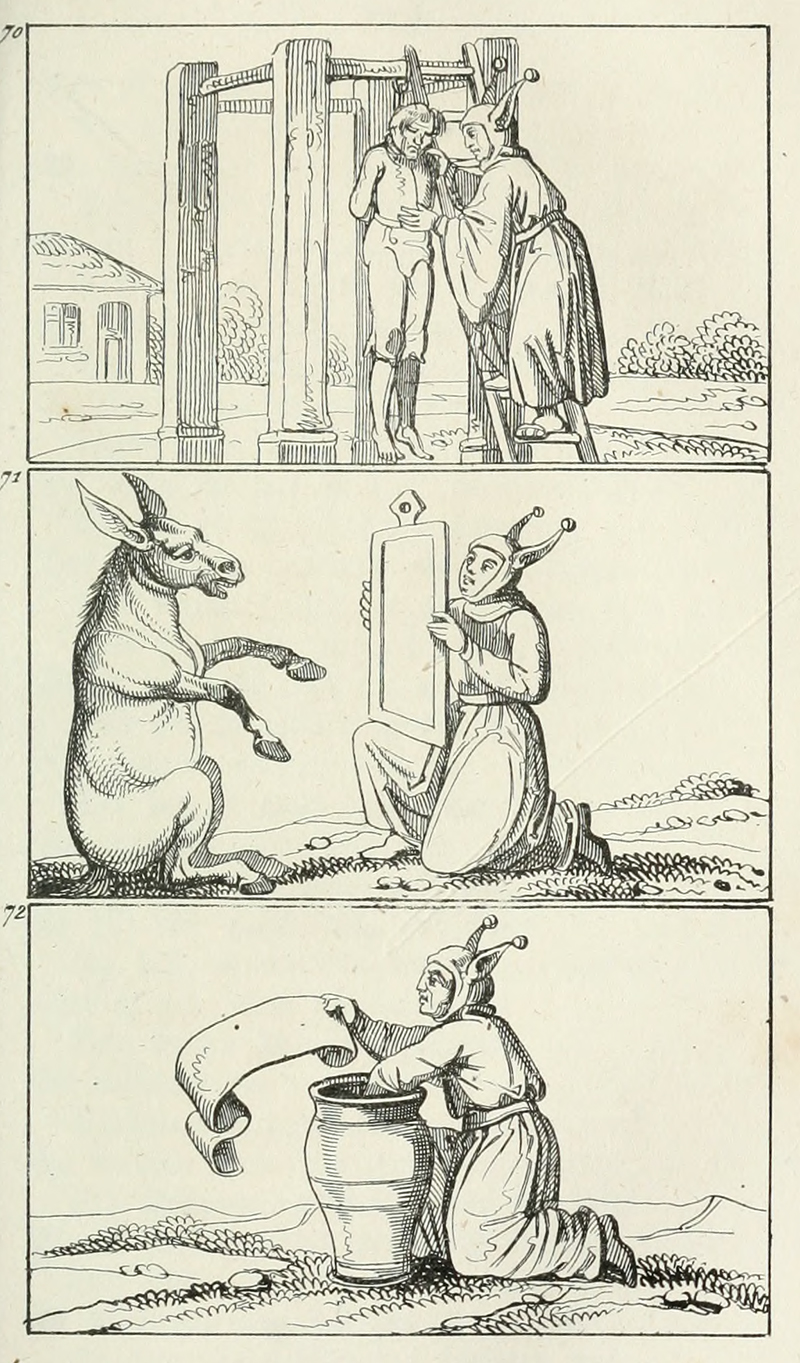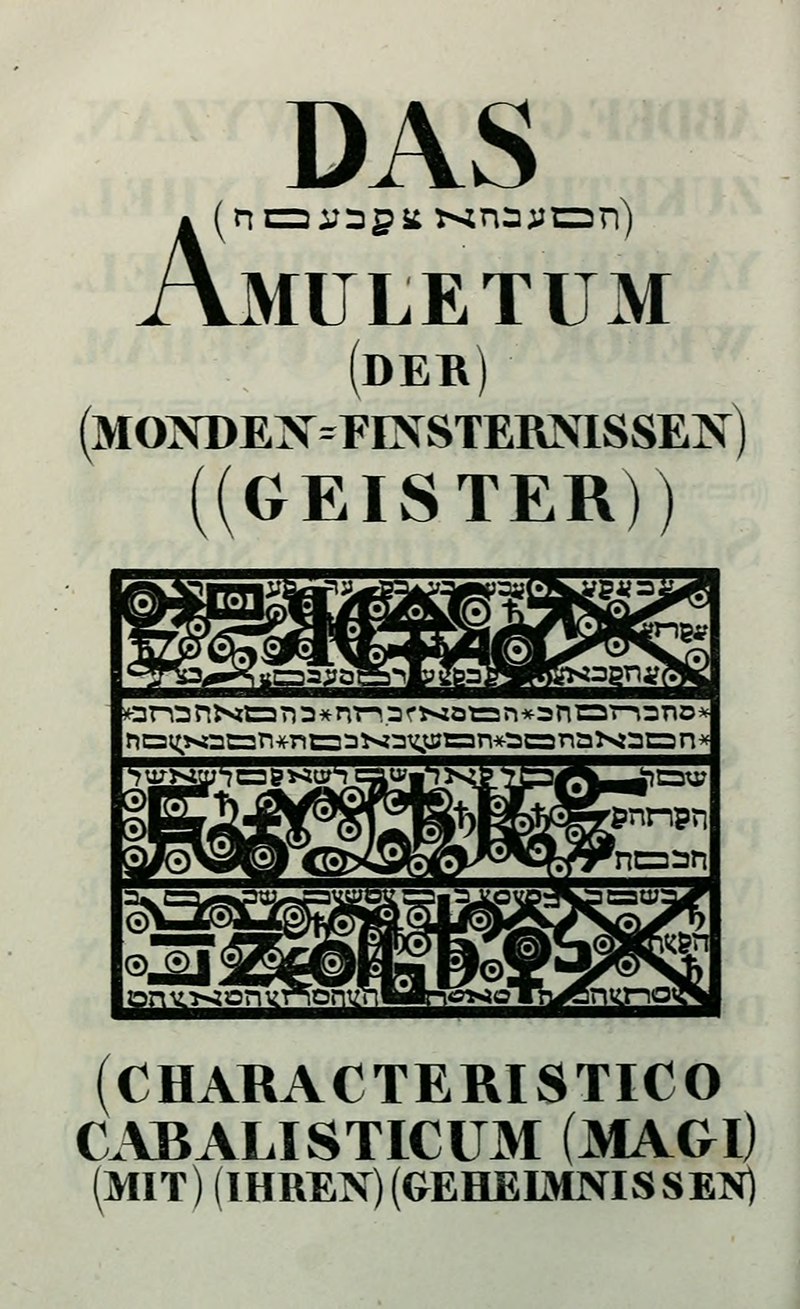Das Kloster, weltlich und geistlich; meist aus der ältern deutschen Volks-,Wunder-, Curiositäten-, und vorzugsweise komischen Literatur Wunder-, Curiositäten-, und vorzugsweise komischen Literatur
The monastery, secular and spiritual; mostly from the older German folk, miracle, curios, and preferably comic literature miracle, curios, and preferably comic literature.
Publisher Johannes Scheible
Pseudonyms: Willibald Cornelius; Democritus
1809 - August 15, 1866
Johann Scheible specialized in books on mysticism and magic which he published under the general series title of "Bibliothek der Zauber-, Geheimniss- und Offenbarungs-Bücher und der Wunder-Hausschatz-Literatur aller Nationen in allen ihren Raritäten und Kuriositäten"
("Library of magic, mystery and revelation books and the miracle house treasure literature of all nations in all their rarities and curiosities”).
also published Doktor Johannes Faust's Magia naturalis et innaturalis oder Dreifacher Höllenzwang, letztes Testament und Siegelkunst. Nach einer kostbar ausgestatteten Handschrift in der Herzoglichen Bibliothek zu Koburg herausgegeben in 5 Abtheilungen. Stuttgart 1849.
Das Kloster ("The Cloister"; full title Das Kloster. Weltlich und geistlich. Meist aus der ältern deutschen Volks-, Wunder-, Curiositäten-, und vorzugsweise komischen Literatur "The Cloister. Profane and sacred. Mostly from older German Popular, Miraculous, Curious and especially Comical Literature") is a collection of magical and occult texts, chapbooks, folklore, popular superstition and fairy tales of the German Renaissance compiled by Stuttgart antiquarian Johann Scheible in 12 volumes, 1845-1849. Vols. 3, 5 and 11 are dedicated to the Faust legend. Vols. 7, 9 and 12 dealing with topics of folklore and ethnography were written by F. Nork (pseudonym of Friedrich Korn, 1803–1850).
Germany is a land of fascinating customs and traditions. Through the work of the many authors, its folk and fairy tales have become widely read around the world. German folklore has also inspired numerous literary, artistic, and musical works. This collection is an accessible introduction to German folklore. It provides numerous examples of German folkways and presents a wide ranging selection of texts. This collection provides insight into the pervasive influence of German folklore on literature and popular culture. Das Kloster ("The Cloister"; full title Das Kloster. Weltlich und geistlich. Meist aus der ältern deutschen Volks-, Wunder-, Curiositäten-, und vorzugsweise komischen Literatur, or in English—"The Cloister. Profane and sacred. Mostly from older German Popular, Miraculous, Curious and especially Comical Literature") is a collection of magical and occult texts, chapbooks, folklore, popular superstition and fairy tales of the German Renaissance compiled by Stuttgart antiquarian Johann Scheible between 1845 and 1849. In addition to the Das Kloster volumes, this collection provides additional 94-volumes of unique perspectives on Central European culture and tradition. Included are texts essential for the study of German folk traditions, the Reformation, wit and humor and 19th-century literature.
Collection of Stephen Romano, Brooklyn
Volume One
(1845), 840 pp, ch. 1-4 Volksprediger, Moralisten und frommer Unsinn
(Popular preachers, moralists and pious nonsense: Sebastian Brand's ship of fools with Geilers von Kaisersberg sermons about it and Thomas Murner's prankster, completely based on the old prints and their pictorial representations)
Volume 2
(1846), 1074 pp, ch. 5-8, Doctor Johann Faust
(Doctor Johann Faust. 1: I. Faust and his predecessors (Theophilus, Gerbert, Virgil etc.); II. Georg Rudolf Widman's major work on Faust; III. Faust's compulsion to hell; IV. Verbatim copy of the first edition of the first book on Faust, from 1587. (Previously drawn in doubt, now found)
Volume 3
(1846), 1065 pp, ch. 9-12, Christoph Wagner, Don Juan Tenorio und verschiedene Schwarzkünstler und Beschwörer. (or Christoph Wagner, Don Juan Tenorio and various black artists and conjurers (or pacts with the devil or the black artists of different nations and the summoners of hell and heaven for wealth, power, wisdom and lust)
Volume Four
(1846), 840 pp, Der Theuerdank by Thomas Murner
(The Thanksgiving or Thomas Murner's writings and his life, along with
his fooling and the mockery: whether the king of England is a liar or Luther.)
Volume Five
(1847), 1160 pp, Die Sage vom Faust bis zum Erscheinen des ersten
Volksbuches,mit Literatur und Vergleichung aller folgenden
(The saga from Faust to the publication of the first folk book,
with literature and comparison of all the following
or
Doctor Johann Faust. 3: The saga from Faust to the publication of the first folk book, with literature and comparison of all subsequent ones; Faust on the Volksbühne, in the puppet or puppet shows; Spell library of the magician: compulsion to hell. - Triple and quadruple compulsion to hell. - The great sea spirit. - Wonder book. - The black raven. - Ghost Commando.– Practice magica. - Treasure trove, etc.)
Volume Six
(1847), 1106 pp, ch. 21-24 Die gute alte Zeit,
after the manuscript collection of Wilhelm von Reinöhl
(The good old days. 1: On the history mainly of city life, traditional costumes, housekeeping, children's games, dancing, jugglers, banquets, women's shelters, magical means, church festivals, pilgrimages etc. From Wilhelm von Reinöhl's handwritten and artistic collections)
Volume Seven
(1847), 1120 pp, F. Nork, Der Festkalender, enthaltend die Sinndeute der Monatszeichen, die Entstehungs- und Umbildungsgeschichte von Naturfesten in Kirchenfeste
(The festival calendar, which contains the meaning of the monthly signs, the origins and transformation history of natural festivals in church festivals)
(on the liturgical year and its evolution out of pagan festivals)
or
The festival calendar: containing: the meaning of the month's signs, the origins and changes in the history of natural festivals in church festivals, description of the uses that occur in them and the interpretation of their symbols; Characteristics of martyrs and heroes of faith worshiped with words and swords on the 366 days of the leap year; Interpretation of many miracle stories, etc
Volume 10
(1848) 1184 pp, ch. 37-40, Johann Fischart's Flöhhatz, Weibertratz,
Ehezuchtbüchlein, podagrammisch Trostbüchlein etc.
(Johann Fischart's Flöhhatz, Weibertratz, Marriage book,
podagrammatic consolation book etc.)
or
(10: Johann Fischarts Flöhhatz, Weibertratz, marriage breeding booklet, podagrammatic consolation booklet collects toes smaller writings; Thomas Murners From the Lutheran fool, church thief and heretic calendar, and seven satyrs against him: Karsthans, Murnarus, Leviathan, etc)
Volume 13
also known as
"The Flying Leaves of the XVI. and XVII. Century, in so-called one-sheet prints with copper engravings and woodcuts, initially from the area of political and religious caricature."
or
(The flying leaves of the XVI. and XVII. Century: in so-called one-sheet prints, with copper engravings and woodcuts; initially from the area of political and religious caricature. From the treasures of the Ulm city library. Stuttgart)

about Stephen Romano









































































































































































































No comments:
Post a Comment